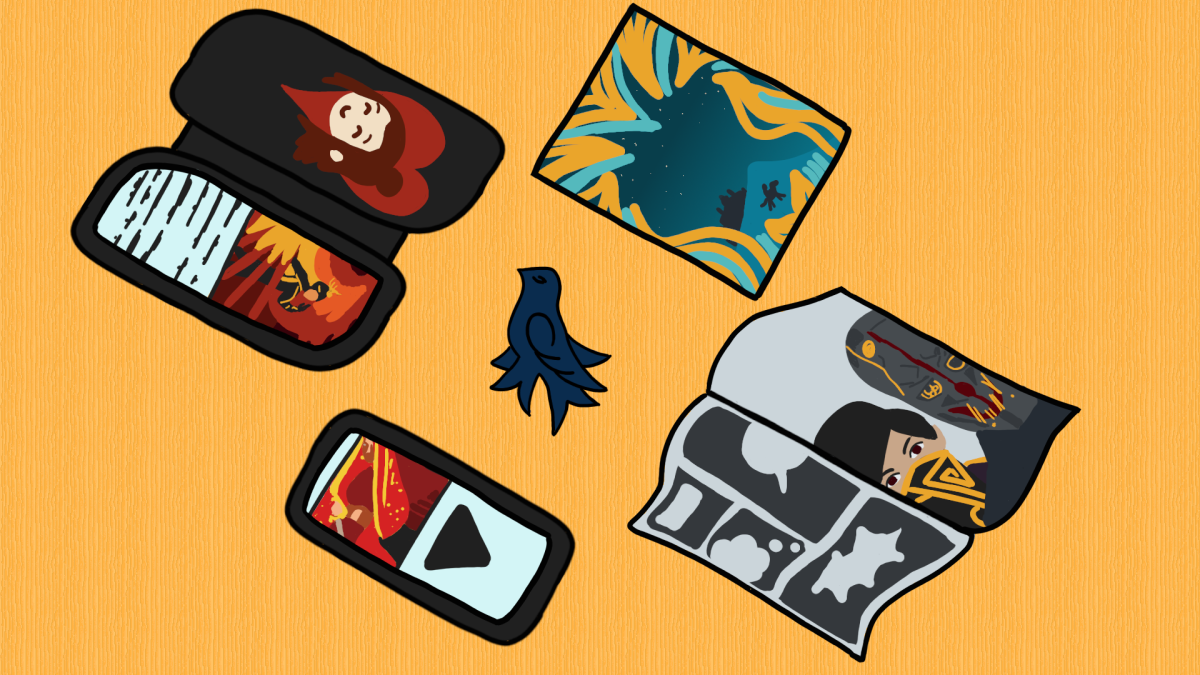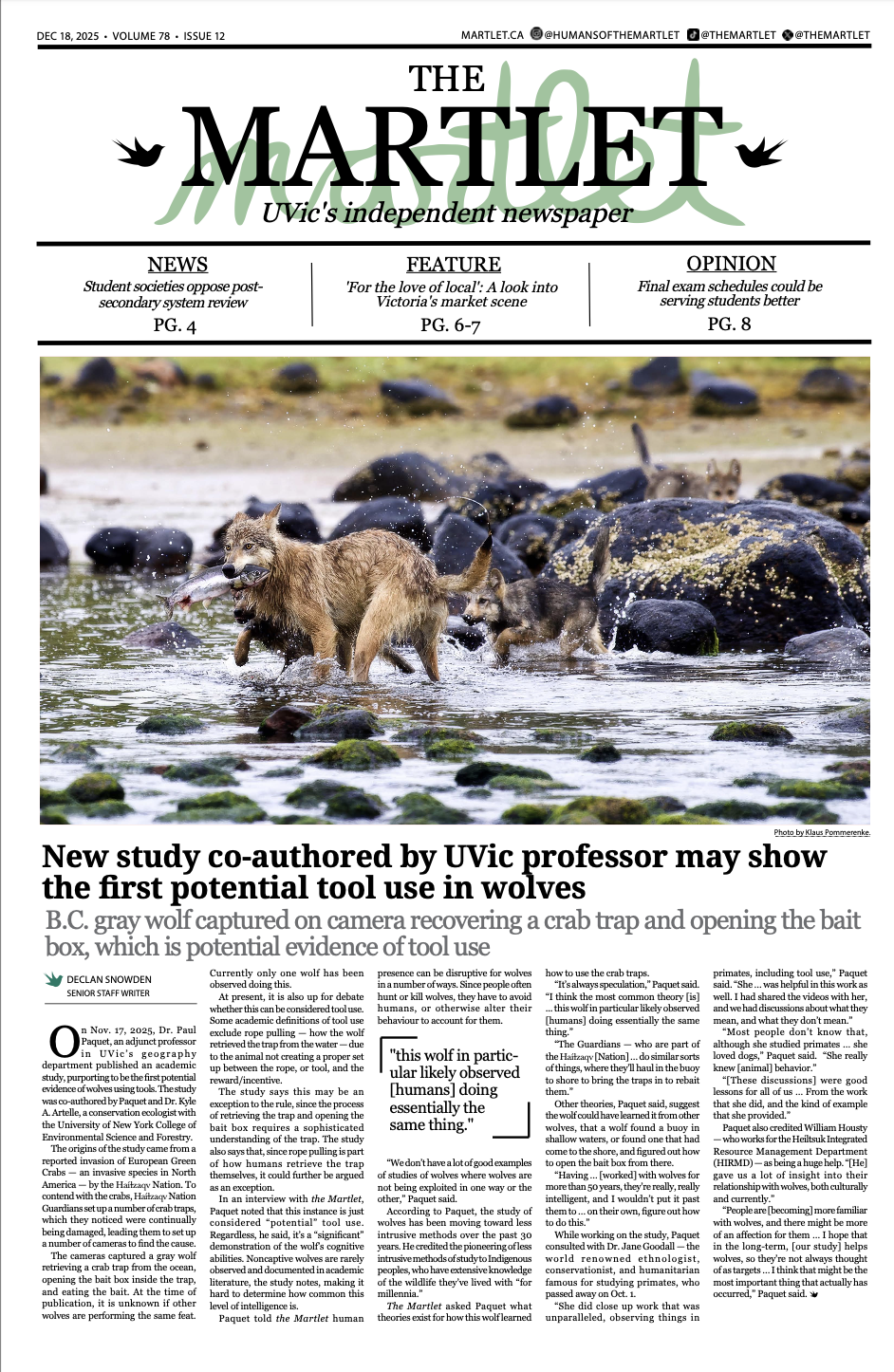New campus book group honours the ‘romance’ of physical books in a digital age

Illustration by Neha Saxena.
The bring your own book (BYOB) club, a student run-initiative, has become a gathering place for students at UVic to share their love of reading. It began earlier this school year, with the first meeting taking place on Oct. 9.
“We came up with the idea of a ‘bring your own book’ club, where there was no pressure to keep to the schedule of reading a monthly book,” says Madi Caville, one of the club’s founders, in an emailed statement to the Martlet. At club meetings, students are encouraged to bring a book and set aside time for reading.
Despite the convenience of e-readers and audiobooks, the appeal of physical books is still very much alive, says Kira Doerwald, a Russell Books staff member.
“There’s something about it. There’s a romance to it.”
UVic writing student Keira Holman agrees that the physicality of a book offers a sensory experience that young readers still treasure.
“Reading a physical book helps me comprehend what’s happening faster … I actually fall asleep if I’m trying to read online,” she says.
As BYOB club members know, books can also be a great way to bring people together and encourage reading. The club aims to provide a safe space and welcoming community — Caville states that having no requirements is the beauty of the club.
Despite what many people think, Caville believes that young people still do have a desire to read physical books. She says that the club “helps to break down stigmas often associated with readers, especially the idea that reading is solitary, boring or limited to ‘nerds,’ thanks to media and TV.”
While clubs like UVic’s are working to redefine reading culture, social media is also bolstering physical book shopping. Doerwald doesn’t use TikTok, but she is aware of when a book is “trending” on the app, because a large volume of customers will come in asking for the same book. “Trends are driving young adult book sales,” she adds.
A lot of the younger people who go to Russell Books come in already knowing what they want, and they don’t wander around browsing like the older customers will, says Doerwald.
“They don’t take suggestions as well,” she says. If the store doesn’t have exactly what they came in for, they’re not going to try something else. This can help drive sales for e-books and audiobooks in place of physical copies, because these customers want a specific book, and they want it now.
To help keep young people interested in reading, teachers have started turning to new books to teach in their English classes at school. “There’s a shift going on. They want newer things to keep interest,” says Doerwald, as she reflects on the “heartbreaking” shift away from classics towards reading trending books in classes.
Young people are struggling with an interest in reading, Doerwald says. “Teachers are trying to come up with new things to interest students, instead of creating a sense of dread when it comes to reading older books … and souring their interest in reading.”
As digital reading resources advance, Caville recognizes the appeal, but says “physical books will always have a special place in my heart.”
“About 85-90 per cent of the [BYOB] club members have a physical book with them,” she adds. And while shared joy in the experience of reading a physical book is one part of the club’s draw, it’s just as much about community, according to Caville.
“[The club] allows people to get to know each other, and not only talk about books… [but also] meet like-minded people.”








